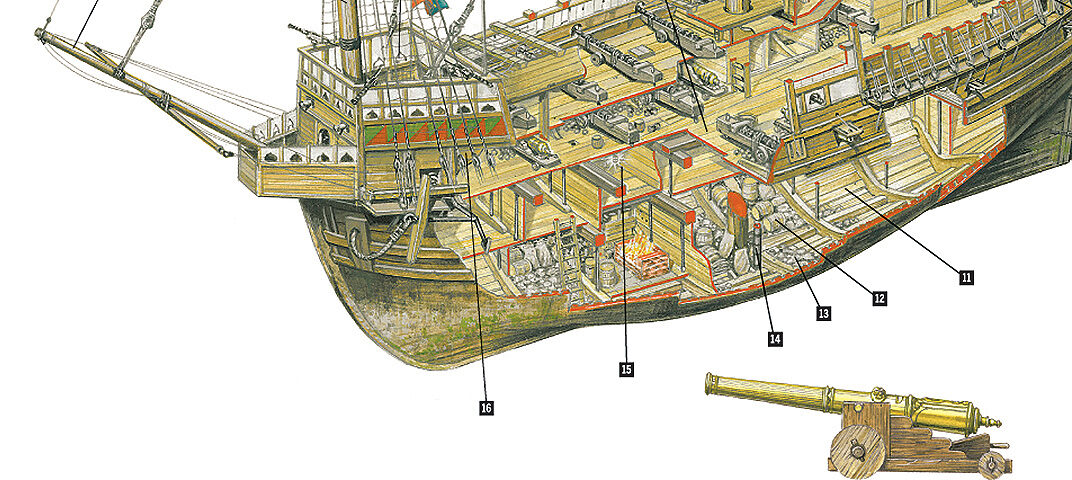The English navy under Henry VIII was a force in transition, and perhaps nothing better speaks to that transition than the carrack Mary Rose—ironically because it sank. Rediscovered in 1971 and raised in 1982, a restored section of the ship is the centerpiece of a purpose-built museum in Portsmouth, England.
When Henry became king in 1509, he ordered the construction of two carracks, Mary Rose and Peter Pomegranate. Completed in Portsmouth in 1512, Mary Rose displaced 400 tons and was about 105 feet long with a 38-foot beam. Its typical 400-man crew included some 200 soldiers and 30 gunners. In its first engagement, off Brest on Aug. 10, 1512, Mary Rose, as Lord High Admiral Sir Edward Howard’s flagship, brought down the mainmast of the French flagship Grande Louise, which withdrew and left the English to win the day.
The man-of-war was a relatively new concept, and ship design was still evolving to accommodate cannons. In 1536 Mary Rose underwent a major refit to accommodate an increased armament, raised from 42 heavy cannons, including five bronze muzzle-loaders, and two swivel guns to 30 heavies—13 of them bronze—and 66 swivels. This raised its displacement to 700 tons. Though more of a gunship with the refit, Mary Rose retained longbows, grappling hooks and other close-quarters weapons, as well as netting across the upper deck to thwart enemy boarding attempts.
After the refit Mary Rose saw its next major action on July 19, 1545, when a French invasion fleet entered the Solent channel off the Isle of Wight. As the English sortied from Portsmouth to engage the enemy, it is thought a sudden gust of wind heeled Mary Rose, sending seawater gushing through its gun ports, which the inexperienced crew had left open. Mary Rose foundered in minutes, taking Vice Adm. Sir George Carew and almost all of his men down with it. Many died when trapped beneath the anti-boarding netting.





